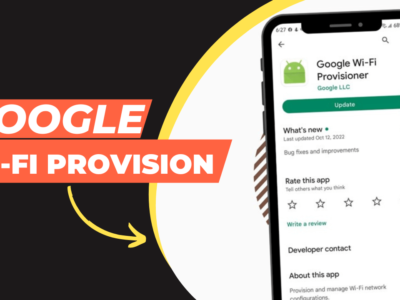For investors looking to potentially grow their wealth through stock market opportunities, purchasing quality shares is a key consideration. However, using only available cash limits upside, and borrowing on margin carries high rates of interest tied to volatile markets.
This is where alternative financing options in the form of low-interest loans for share purchases provide a compelling middle ground. By qualifying for a forbrukslån aksjer loan backed by intended share positions, individuals gain the ability to dollar cost average into desired equities over time instead of waiting to fully fund purchases.
Loans are structured so that funds are deposited in tranches directly into the investor’s designated brokerage account. This allows for authorized market purchases to be made immediately with each disbursement.
For investors seeking greater access to capital gains andopportunities, yet unwilling to risk excessive leverage or depletion of personal reserves, loans can represent an intriguing middle path. The following guide explores this alternative funding structure in more detail.
Eligibility for Share Purchase Loans
When assessing qualification for share purchase loans, lenders primarily focus on three key criteria – credit history, income levels, and pre-existing investment experience.
Borrowers usually need a minimum credit score of 700 to be considered. This helps ensure loan capital will be judiciously managed rather than treated as easy credit. Lenders may also review broader credit reports for negative items that could signal higher risk.
Sufficient income is equally important to demonstrate repayment ability over the loan term without undue financial strain. Most lenders establish qualifying income minimums at least 3-4 times the monthly loan payment. Supporting documentation like recent pay stubs or tax returns may be assessed.
Finally, experience investing in stocks is commonly required to affirm the capacity to research and select shares prudently. Multiple years of actively trading with a diversified portfolio demonstrates this competence to analysts tasked with underwriting applications. First-time investors may have difficulty being approved for sizeable loan amounts.
Loan Amounts and Interest Rates
When determining appropriate loan amounts, lenders analyze an applicant’s financial profile and intended share purchases very carefully. Several factors influence maximum borrowing potential:
Loan-to-Value (LTV) Ratios
Most lenders allow borrowing up to 50% of the intended purchase price of qualifying shares. Higher LTVs above 60% require superior credit and larger padding for price volatility.
Planned Purchase Costs
Borrowers submit the stock tickets and planned purchase amounts for underwriting assessment. Large single purchases may not be fully funded.
Maintenance Requirements
A portion of proceeds is often held back as a margin to avoid liquidations if prices decline below collateral level.
Rates on share purchase loans also depend on individual circumstances but average 5-7% for qualified applicants. Lower fixed rates stay in place regardless of share performance. Factors impacting the rate include:
Loan Metrics
Borrowers with higher scores and no recent late payments can prequalify for the lowest rates.
Loan Size
Larger loans involving greater risks for the lender command slightly higher rates, though still competitive.
Loan Term
Shorter 12–24-month terms see lower rates than 3-5 year options which allow more flexibility.
With prudent planning, these personalized loans afford investing access otherwise not possible from available cash or at portfolio margin rates exceeding 10% annually at times.
Using Loan Funds to Purchase Shares

Once approved for a share purchase loan, the process of utilizing funds is straightforward. Here are the typical steps:
Loan Closing
Legal agreements are signed detailing the collateral, payment terms, and protections for both parties. This finalizes the loan facility.
Funding Disbursement
The agreed loan amount is electronically wired to the designated brokerage account in a single disbursement or structured drawdowns depending on the purchase schedule.
Placing Share Orders
With loan capital available, the borrower can immediately begin executing buy orders for the stocks specified during underwriting.
Confirming Positions
The broker reports back newly acquired share lots and average costs forming the loan collateral pool.
Lender Monitoring
Using authorization from the brokerage, the lender tracks the collateral portfolio value relative to the outstanding balance.
Additions Permitted
As long as maintenance levels are intact, the agreement allows prudent reinvestment of dividends or profits back into approved shares.
This direct-to-account funding approach streamlines establishing share positions without waiting periods common to other options. Borrowers gain immediate upside participation potential as stocks are purchased.
Maintenance Requirements
Once the initial share purchases are complete using loan funds, ongoing collateral maintenance becomes important for borrowers to uphold the terms. This protects both parties in fluctuating markets.
Collateral Monitoring
Lenders routinely track the value of pledged share positions compared to the remaining credit balance.
Margin Calls
If prices drop the collateral below minimums, borrowers must promptly add more qualifying shares or repay part of the principal to safely re-establish levels.
Proactive Steps
Borrowers can voluntarily pay down credit balances or add collateral proactively to further insulate from unforeseen price swings and avoid maintenance calls.
Re-Investing Gains
As share prices and the portfolio value increase over time, maintenance requirements become easier to sustain, and the flexibility to re-invest dividends and profits back into existing positions is permitted.
Loan Extension
Once matured, the arrangement may allow an extension if collateral meets levels, and the borrower demonstrates payment performance. New terms would apply.
Following collateral maintenance protocols gives the flexibility to keep the low-cost financing program active long-term. It also protects lenders’ security for each loan.
Repayment Terms
Flexibility with repayment timelines is a defining advantage of share purchase loans. Key factors include:
Amortization Options
Borrowers can select low monthly payments covering interest alone, allowing more investment income to compound. Full amortization over the term sees higher initial installments.
Prepayment Allowance
Prepaying the credit in part or full before maturity dates usually carries no penalties, unlike most mortgages. This freedom lets profits be reinvested.
Refinancing Potential
If collateral assets appreciate significantly, the arrangement may permit drawing a portion of equity value as cash, while keeping the loan in place.
Summary
Share purchase loans represent an intriguing alternative for investors determined to gain upside exposures yet unwilling to fully leverage personal reserves or pay high costs associated with traditional margin borrowing. Though not risk-free, the low and fixed rates provide insulation from volatility seen elsewhere.
Compared to waiting until sufficient cash savings accumulate, these loans enable individuals to begin dollar-cost averaging into well-researched stocks earlier while paying much less interest over time. The collateralized structure also protects lenders, mitigating risks that encumber borrowing against personal assets.
Of course, prospective applicants must carefully consider market dependencies and commitment to upholding loan terms. But share purchase loans can offer an intriguing vehicle to improve investment outcomes through enhanced access potentially for those investing with a long-term buy-and-hold discipline. Understanding how they work enables each qualified individual to determine if this unique financing structure merits consideration as part of their personalized strategy.














